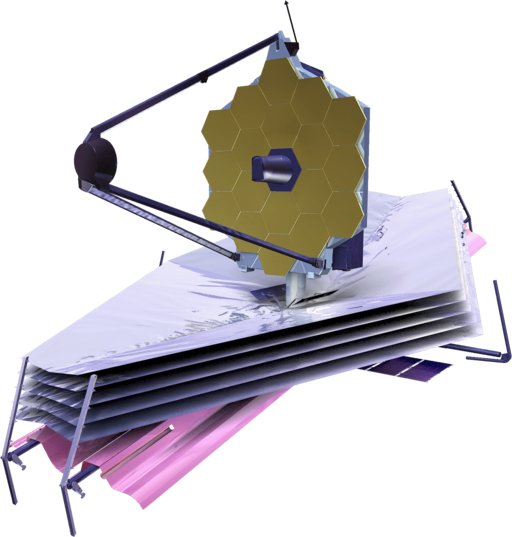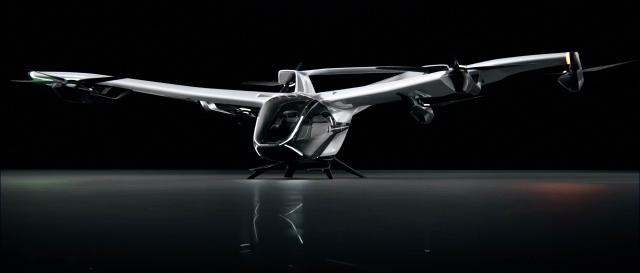Events 2022
27
Jan
2022
18:00
We regret that due to a Covid infection of the lecturer, Dr Tina Jurkat-Witschas, this lecture has to be postponed to a later date.
However the good news is that Prof. Dr.-Ing. Dieter Scholz has agreed to give a talk on "Aviation and the Climate – An Overview".
Here is the poster
![]() poster_2022_01_27_AviationAndTheClimate.pdf (314 KB)
poster_2022_01_27_AviationAndTheClimate.pdf (314 KB)
The time and the Zoom link are the same and as given below.
RAeS lecture in cooperation with DGLR, HAW Hamburg, VDI & ZAL
Lecture in English
Unfortunately due to the indisposition of the lecturer we have had to postpone the original planned lecture to 28 April. However we are very grateful to Dr Tina Jurkat-Witschas who at short notice has agreed to talk to us about aspects of her research into contrails.
Contrail and cirrus that evolve from contrails represent the largest share of the climate impact from aviation, even larger than the contribution from CO2. In order to reduce this climate impact and the uncertainties related to it, the fundamental science of contrails and their impact on the atmosphere from a present and future aircraft fleet needs to be based on accurate and reliable airborne measurements.
Research at DLR has focused on the detection of contrails in a suite of measurement campaigns in the past decade. Different evolution stages of contrails from the first second behind the aircraft until they evolve into contrail cirrus have been measured with national and international partners like NASA and NRC. We present recent results on contrail properties measured with DLR’s unique research aircraft fleet. The observations are further used to guide model evaluation from the plume to the global scale.
While new carbon-free technologies like hydrogen powered engines now come into perspective, their impact on contrail formation is largely unknown. We will comment on the importance of airborne measurements of these new type of contrails, the challenges and potentials that come with it to frame a sustainable future air traffic.
Biography
Dr. Tina Jurkat-Witschas is Project Leader of the DLR Research Group H2CONTRAIL and Prof. Dr.
Christiane Voigt is Head of Department Cloud Physics at the DLR and Professor at the University of Mainz
Time:
18:00 Uhr

08
Mar
2022
10:00
Eine Expertenrunde aus Wissenschaft und Praxis
Veranstalter: airliners.de
- Michael Santo (H&Z-Unternehmensberatung AG)
- Prof. Dr. Dieter Scholz (HAW Hamburg, Hamburg University of Applied Sciences)
- Arne Seitz (Bauhaus Luftfahrt)
- Dr. Andreas Klöckner (DLR)
Dienstag, 8. März, 10 Uhr, Online: https://youtu.be/VZyocnM-svc
Moderation: David Haße, Herausgeber airliners.de
Neue Treibstoffe, neue Antriebe, neue Flugzeugentwürfe. Der Luftverkehr stellt sich den Herausforderungen, die der Klimawandel mit sich bringt. Nur wie realistisch sind die verschiedenen Ideen? Was kommt wann und wo beginnt die Utopie? Im Webinar "Flugzeugbau der Zukunft" klären wir die wichtigsten Fragestellungen zum Stand der Technik.
![]() poster_2022_03_08_FlugzeugbauDerZukunft-2.pdf (524 KB)
poster_2022_03_08_FlugzeugbauDerZukunft-2.pdf (524 KB)
Time:
10:00 Uhr

31
Mar
2022
18:00
RAeS lecture in cooperation with DGLR, HAW Hamburg, VDI & ZAL
Lecture in English.
 The James Webb Space Telescope (JWST) is optimised for making infrared observations in order to study the origin and evolution of galaxies, stars and planetary systems and is designed to look further back in space and time than the Hubble Space Telescope. It is a massive international project, decades in the making, involving NASA, the European Space Agency and the Canadian Space Agency.
The James Webb Space Telescope (JWST) is optimised for making infrared observations in order to study the origin and evolution of galaxies, stars and planetary systems and is designed to look further back in space and time than the Hubble Space Telescope. It is a massive international project, decades in the making, involving NASA, the European Space Agency and the Canadian Space Agency.
The UK has a key role in leading a multi-national group that provides one of the 4 instruments on JWST with the lead scientist (Principal Investigator) based at the Royal Observatory, Edinburgh and the Project Manager (myself) based in what is now Airbus Defense and Space in Stevenage.
This talk provides an overview of how JWST came to be, why it looks the way it does and a preview of what is to come when it begins science operations following its successful launch on Christmas Day 2021.
Biography
John retired in May 2013 after over 30 years working in the space industry, mainly involved in spacecraft engineering and project management. He began his career as an aerothermodynamics at Rolls-Royce Aero Engines in Derby where he became a member of the Royal Aeronautical Society some 50 years ago. He also worked briefly in the nuclear power industry before joining what was then British Aerospace at Stevenage working on communication satellites.
During his career ‘in space’ he has been fortunate to have worked on most aspects of spacecraft engineering covering design, development, manufacture, integration, test, launch and operations of communication and scientific missions, including the industrial management of the Beagle 2 Mars lander project in its early years. For the last decade of his career John was the European Consortium Project Manager for the Mid-Infrared Instrument on the James Webb Space Telescope - more details are included in his talk.
In 2013 John was awarded the Royal Aeronautical Society’s Geoffrey Pardoe Space Award along with the Society’s Specialist Bronze Award “In recognition of his effective leadership and dedication as one of the major contributing factors in the successful management and delivery of the James Webb Space Telescope Mid-Infrared Instrument, a flagship science project of the UK Space Agency.”
![]() poster_2022_03_31_Space_Telescope_JWST.pdf (440 KB)
poster_2022_03_31_Space_Telescope_JWST.pdf (440 KB)
![]() text_2022_03_31_Space_Telescope_JWST-(NXPowerLite-Kopie).pdf (2,19 MB)
text_2022_03_31_Space_Telescope_JWST-(NXPowerLite-Kopie).pdf (2,19 MB)
Time:
18:00 Uhr

28
Apr
2022
18:00
RAeS lecture in cooperation with DGLR, HAW Hamburg, VDI & ZAL
Lecture in English
Today, contrails contribute the largest share to the climate impact from aviation, even surpassing the warming by its carbon dioxide emissions. While CO2 has atmospheric lifetimes of about a century, contrails live only for few hours and thus provide a fast option to reduce the climate impact from aviation.
The current status of knowledge on aircraft emissions and contrails in light of results from recent aircraft campaigns and research activities will be presented. Operational and technological measures to reduce the climate impact from aviation will be discussed with a focus on contrail avoidance. A contrail avoidance test experiment has been performed during the CIRRUS-HL aircraft campaign in summer 2021. Results from the CIRRUS-HL include the assessment of the quality of weather and contrail forecast. The potential for flight routing for contrail avoidance or reducing contrail warming by a shift to daytime flight routes will be shown. The impact of technological measures, i.e. low aromatic fuels and new engines on emissions and climate will be presented and an outlook on future fuels will be given.
Biography
Christiane Voigt is also Professor for Atmospheric Physics at the University Mainz. Her research focuses on the aviation impact on atmospheric composition and climate. She coordinates aircraft campaigns on emission and contrail measurement in cooperation with international partners and combines the airborne experiments with modelling to investigate the potential of current and future technologies for sustainable aviation.
![]() poster_2022_04_28_ContrailAvoidance-2.pdf (273 KB)
poster_2022_04_28_ContrailAvoidance-2.pdf (273 KB)
Download presentation
![]() text_2022_04_28_ContrailAvoidance.pdf (5,69 MB)
text_2022_04_28_ContrailAvoidance.pdf (5,69 MB)
Time:
18:00 Uhr

12
May
2022
18:00
RAeS lecture in cooperation with DGLR, HAW Hamburg, VDI and ZAL
(Lecture in English)
Received wisdom is that in this age of digital engineering, wind tunnels are in decline. The imminent demise of the wind tunnel has been eagerly anticipated for over 50 years now … and yet they have stubbornly refused to die. Indeed, the last 10 years have seen high-speed wind tunnels stage a remarkable comeback; new tunnels are being built, existing tunnels are being upgraded, and mothballed tunnels are being reactivated. In this talk I will focus on industrial-scale transonic wind tunnels, discussing the historical development of these facilities and then reviewing their current and near-future status.
Doug Greenwell is a consultant specialising in applied aerodynamics, from wind engineering to high-speed flight. He gained his PhD in delta wing aerodynamics from Bath University in 1993, followed by a varied career spanning 35 years in academic, industrial, and government research and development. He has extensive experience of industrial wind tunnel testing, ranging from low-speed building aerodynamics as Technical Director at RWDI, to transonic flight vehicle testing as Chief Aerodynamicist at ARA.
![]() poster_2022_05_12_TransonicWindTunnels-2.pdf (364 KB)
poster_2022_05_12_TransonicWindTunnels-2.pdf (364 KB)
![]() text_2022_05_12_TransonicWindTunnels.pdf (3,66 MB)
text_2022_05_12_TransonicWindTunnels.pdf (3,66 MB)
Time:
18:00 Uhr

02
June
2022
18:00
HAW lecture in cooperation with DGLR, VDI, ZAL and RAeS
(Lecture in English)
The safe, responsible and at the same time economical recycling of commercial aircraft is one of the greatest challenges for the global aviation industry. Every year about 1000 airliners reach the end of their lives, which should not just be parked somewhere in the desert. A new aircraft dismantling industry is emerging. A lot is also happening in the recycling process.
Action at end-of-life: Decommissioning, careful disassembly and violent dismantling. After the aircraft has been dismantled, a distinction is made between reuse (recycling) or disposal, depending on the component or material in question.
For economic and ecological reasons, the aim is to achieve as high a percentage of reuse as possible (recycling rate). But
everything that cannot be reused must be disposed of. Landfill or incineration are two typical ways of disposal.
Time:
18:00 Uhr

09
June
2022
18:00
RAeS lecture in cooperation with DGLR, VDI, ZAL and HAW Hamburg
Lecture in English
Contrail and cirrus that evolve from contrails represent the largest share of the climate impact from aviation, even larger than the contribution from CO2. In order to reduce this climate impact and the uncertainties related to it, the fundamental science of contrails and their impact on the atmosphere from a present and future aircraft fleet needs to be based on accurate and reliable airborne measurements.
Research at DLR has focused on the detection of contrails in a suite of measurement campaigns in the past decade. Different evolution stages of contrails from the first second behind the aircraft until they evolve into contrail cirrus have been measured with national and international partners like NASA and NRC. We present recent results on contrail properties measured with DLR’s unique research aircraft fleet. The observations are further used to guide model evaluation from the plume to the global scale.
While new carbon-free technologies like hydrogen powered engines now come into perspective, their impact on contrail formation is largely unknown. We will comment on the importance of airborne measurements of these new type of contrails, the challenges and potentials that come with it to frame a sustainable future air traffic.
Biography
Dr. Tina Jurkat-Witschas is Project Leader of the DLR Research Group H2CONTRAIL and Prof. Dr. Christiane Voigt is Head of Department Cloud Physics at the DLR and Professor at the University of Mainz.
![]() poster_2022_06_09_ContrailDetection-2.pdf (318 KB)
poster_2022_06_09_ContrailDetection-2.pdf (318 KB)
![]() text_2022_06_09_ContrailDetection.pdf (6,02 MB)
text_2022_06_09_ContrailDetection.pdf (6,02 MB)
Time:
18:00 - 20:00 Uhr

30
June
2022
18:00
HAW lecture in cooperation with DGLR, RAeS Hamburg, VDI & ZAL
Time:
18:00 Uhr

06
Sep
2022
18:00
Annual Gerhard Sedlmayr Lecture
Lecture in English

![]() Urban Air Mobility is at the juncture where the ever growing societal need for efficient and sustainable transport meets new solutions provided by emerging technology. Progress in electrical propulsion is a key enabler to UAM, along with technologies for autonomous flight, or mobile connectivity that allows to provide all-new service offerings via the device of the user.
Urban Air Mobility is at the juncture where the ever growing societal need for efficient and sustainable transport meets new solutions provided by emerging technology. Progress in electrical propulsion is a key enabler to UAM, along with technologies for autonomous flight, or mobile connectivity that allows to provide all-new service offerings via the device of the user.
The lecture provides the rationale for this new and sustainable way of flying in cities and beyond. It describes the state of the art, and in particular Airbus’ positioning with CityAirbus NextGen and the various exploratory projects undertaken by the Group. In that sense, UAM is much broader than just a flying vehicle: it needs to be accepted by society and seamlessly integrated into our urban environments. It requires infrastructure on the ground, an adapted airspace management, and an efficient integration with complementary means of transport.
Furthermore, the introduction of a new means of transport requires that highest safety standards are met, building on the strong safety track record of the aviation industry. The new eVTOL architectures and the new mission profiles call for new approaches to safety of the vehicles in their operational environment. Therefore, the second part of the lecture provides an overview on Airbus’ approach to safety and particular aspects concerning the distributed electric propulsion system, flight controls and aerostructures.
Previously, Joerg worked in the Strategy department at Airbus on projects related to breakthrough innovation, value chain positioning, post-merger integration, and large-scale company transformation. Furthermore, he worked in the engineering department on aeroelastic flight test analyses and certification of the A380 In the Flight Physics department at Airbus.
Before joining Airbus, he was a consultant at McKinsey & Company where he focused on operational and strategic business challenges for major players in the high-tech industry and beyond.
Joerg holds a PhD for his research performed at Airbus Helicopters on closed-loop control of the whirl flutter instability on tilt-rotor aircraft. He conducted aerospace engineering studies at the University of Stuttgart, at Caltech in Pasadena, California, and at UPS/ISAE-SUPAERO in Toulouse, France.
Time:
18:00 - 21:30 Uhr

20
Oct
2022
18:00
DGLR lecture in cooperartion with RAeS, VDI, HAW and ZAL
The presentation will introduce the phenomenon of aircraft icing and highlight the peculiarities related to SLD in aviation, also with regards to the regulations. Changes of aircraft characteristics, flight dynamics and handling qualities will be discussed. Countermeasures and detection technologies are key to safe aircraft operation in these hazardous conditions. An overview of anti-ice and de-icing systems as well as detailed information on recent research activities on robust and reliable ice detection will be given.
![]() poster_2022_10_20_AircraftIcing.pdf (254 KB)
poster_2022_10_20_AircraftIcing.pdf (254 KB)
Time:
18:00 Uhr

25
Oct
2022
07:00
On Tuesday, 25 October the RAeS Hamburg Branch is planning a full-day visit to the International Helicopter Training Center (Internationales Hubschrauberausbildungszentrum) in Bückeburg. Highlights will be a visit to the Simulation Center and various training helicopters.
Following the visit we will also stop at the Helicopter Museum in Bückeburg.for a guided tour.
Full details of the visit have now been finalised and we plan to hire a bus which will leave Hamburg Altona ZOB at 07:00 with a pick-up stop south of the Elbe in Marmstorf, arriving in Bückeburg at 10:30. We plan to be back in Hamburg by 20:30 with an intermediate stop south of the Elbe.
Participation will be limited to 30 people.
Time:
07:00 - 22:00 Uhr

03
Nov
2022
18:00
HAW lecture in cooperation with DGLR, RAeS Hamburg, VDI & ZAL
Fliegen bringt unsere Welt näher zusammen und das ist gut so. Fliegen ist aber auch eine der klimaschädlichsten Arten des Reisens. Der Traum vom Fliegen hat sich für die Menschheit erfüllt. Nun muss auch der Traum vom klimaneutralen Fliegen wahr werden, ein „weiter so“ ist keine Option.
Diese Erkenntnis hat sich bei vielen Entscheidern durchgesetzt. In Forschung, Entwicklung und Industrie wird hervorragende Arbeit geleistet, um dieses Ziel zu erreichen. Die Branche selbst hat jedoch noch nicht alle Reflexe abgelegt, um Entwicklungen zu bremsen, die dem Wachstum des Luftverkehrs einen Dämpfer verleihen könnten. Dabei ist der Weg aus der Klimakrise bis auf weiteres nicht mit einer reinen Antriebs- oder Kraftstoffwende zu bewältigen, das gilt sowohl für
Verkehre am Boden, als auch in der Luft.
Fortsetzung im Poster:
![]() poster_2022_11_03_Luftverkehr_Politik_in_Deutschland.pdf (610 KB)
poster_2022_11_03_Luftverkehr_Politik_in_Deutschland.pdf (610 KB)
Time:
18:00 Uhr

24
Nov
2022
18:00
DGLR lecture in cooperation with HAW, RAeS Hamburg, VDI & ZAL
Studies in research often promise a fast system implementation and usage in operation. But especially in safety critical areas like air navigation services it can be recognized that it takes quite a long time from proclaimed "ready for use" at research level until actual operational use. Why this difference? Often, necessary aspects like safety assessment, certification, and training procedures for operators cannot be analyzed by the researcher. The validation under operational circumstances may lead to additional questions.
The presentation will demonstrate several challenges in the actual discussion about avoidance of persistent contrails. The German project D-KULT (Demonstrator klima- und umwelt- freundlicher Lufttransport, Juni 2022 bis Mai 2025) works on several solutions and its ideas are presented during the lecture.
Ralph Leemüller has accumulated knowledge from many years in the research and development division at DFS. He has experience in product management of air traffic simulators as well as management of complex systems in national and in international projects. Currently, he works on the evaluation of procedures to mitigate climate impact through air traffic management.
![]() poster_2022_11_24_ClimateOptimizedFlight.pdf (268 KB)
poster_2022_11_24_ClimateOptimizedFlight.pdf (268 KB)
Time:
18:00 Uhr

06
Dec
2022
19:00
Wing Commander Jim Schofield BSc FRAeS RAF (Retd) learned to fly in a Super Cub before he could drive, then joined the University of Wales Air Squadron. After university he got his Commercial Pilot’s Licence then joined the RAF. During 20 years of service Jim became the MoD’s lead Harrier and F-35 test pilot, the Empire Test Pilot School chief instructor and finally the wing commander in charge of UK F-35 requirements. On leaving the RAF Jim flew for British Airways for 3 years. He subsequently became the Spitfires.com chief pilot in 2019, and in 2023 will become an EVTOL test pilot for Vertical Aerospace.
Jim has flown over 115 types and was the first pilot to fly a century of front-line fighters including Bristol Fighter, SE5a, Spitfire, Mustang, Viggen, Jaguar, Harrier, Tornado, Gripen, Typhoon, F-15, F-16, F/A-18 and F-35. He was one of the first pilots to land an F-35 on a ship at night. Flying for the Shuttleworth Collection since 2010, he is a UK and US instructor, a display pilot evaluator and a member of the Society of Experimental Test Pilots.
Time:
19:00 - 22:00 Uhr


